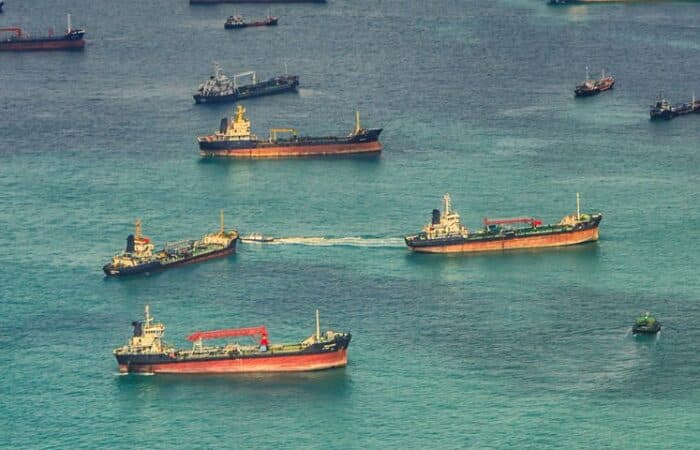Vessel Vetting
What is vessel vetting?
Vessel vetting is a process of evaluating and assessing the suitability of a vessel for a particular purpose, such as carrying a certain type of cargo, or operating in a specific region. This evaluation typically involves a review of the vessel’s technical and operational characteristics, and its safety and compliance record. The goal of vessel vetting is to ensure that the ship is safe and compliant with relevant regulations.
A variety of organizations, including ship owners and operators, charterers, and cargo owners, as well as independent third parties, can complete the vetting process.
This is also important if duty delivery paid (DDP) is in place, a delivery agreement where the seller (exporter) is responsible for the shipment and for all potential risks and costs, until the shipment reaches its final destination.
Why vessel vetting is important
There are four main reasons why inspecting the vessel before using it for shipping is an essential part of the shipping process:
- A detailed inspection can test the ship’s safety: all ships must first complete an offshore vessel inspection checklist to ensure safety. This can include issues with the vessel’s structure, machinery, or safety equipment, as well as any operational concerns that may arise. There are AI platforms to assess behavioral risk, assign a risk profile score, and vet vessels based on real-time, dynamic data.
- Environmental protection: ensure that the ship complies with the latest policies to reduce greenhouse gas emissions, lower the carbon footprint, and not cause pollution that can harm sea life.
- Confidence building: vessel vetting is an important tool for shippers to gain confidence in the vessel, crew, and shipping company. A ship that goes through the vetting process inspires confidence that the cargo will be transported safely and without delay.
- Maintaining shipping industry integrity: vessel vetting was introduced in the late 1960s and was first adopted by oil carriers in response to major oil spills. The Oil Companies International Marine Forum (OCIMF) was formed shortly after and represents the interests of oil and chemical companies. It has become the leading authority for safety in the marine industry. They provide tools and inspection programs, such as the Ship Inspection Report (SIRE), Offshore Vessel Inspection Database (OVID), and the Marine Terminal Information System (MTIS). By using a unified set of rules, the marine shipping industry helps maintain public trust.
What is included in the offshore vessel inspection?
An offshore vessel inspection checklist is a tool used to determine the condition and safety of an offshore vessel. The checklist includes all the different elements of the vessel ecosystem that need to be inspected, such as the structural integrity, machinery and equipment, navigational and communication systems, safety equipment, and crew accommodations. The inspection may also include a review of the vessel’s maintenance and repair records, as well as its compliance with relevant regulations, and industry standards.
Some of the main areas that are included in the pre-vetting inspection include:
- Hull structure: the inspection covers the vessel’s hull, deck, and superstructure, as well as its tanks, hatches, and other structural components.
- Machinery and equipment: this covers the propulsion system, generators, pumps, and other mechanical equipment.
- Navigational and communication systems: ensures the radar, GPS, and other navigational equipment, as well as its communication systems, are working and up to industry standards.
- Safety equipment: inspects the life rafts, lifeboats, firefighting equipment, and other safety systems.
- Maintenance and repair records: review the documentation of the vessel’s maintenance and repair history, as well as any outstanding repairs that need to be completed.
It’s important to note that this is just a sample list and that the specific items included on an offshore vessel inspection checklist may vary, depending on the vessel and its intended use.

What is SIRE vetting?
Ship Inspection Report (SIRE) vetting is a process used by oil and chemical companies to assess the safety and suitability of ships used to transport products. It involves a thorough inspection of the ship and its equipment, and a review of the vessel’s crew and operating history. The goal of SIRE vetting is to ensure that the ship meets industry standards for safety and environmental protection, and that it is capable of safely transporting the products it has been chartered to carry.
SIRE vetting is carried out by trained and certified inspectors who are employed by OCIMF. The inspections are carried out at ports worldwide and the results of the vetting process are recorded in the SIRE. These reports are made available to member companies of the OCIMF and can be used to help them decide whether to charter a particular vessel for their cargo.
How is AI used for vessel vetting?
In addition to a manual offshore inspection, shippers can benefit from dynamic vessel vetting. This provides a wide range of data pertaining to behavioral risks, such as port calls, dark activity, sailing at night, voyage irregularities, and more. Advanced technology allows you to go beyond the industry standard static data and get dynamic insights based on real-time information.
AI software uses machine learning to evaluate hundreds of real-time data points, such as AIS transmitters, radar signals, and imagery data. These Know Your Vessel (KYV) insights clearly show the risks involved with a specific ship or fleet of ships, making it easier to find a ship that complies with all the safety standards and environmental policies.







